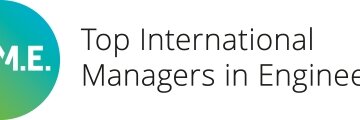
Machine Design and Production Engineering Unit
Machine Design and Production Engineering Unit provides a coherent set of training courses, ranging from geometry, the central discipline of mechanics, to the design and organisation of production lines and asset management 5.0. Training ranges from the 1st year of the Bachelor’s degrees in Engineering and Architectural Engineering to the 2nd year of the Master’s degree in Engineering. The Unit also supervises doctoral theses and participates in continuing education activities in total quality management.
The supervision of design projects (manufacturing technology in the 3rd year of the Bachelor's degree in Mechanical Engineering; machine design, industrial projects, Shell Eco-marathon and Eurobot in Master's degree in Mechanical Engineering) is the major educational investment of the Unit. These project activities can be considered in an international interdisciplinary context.
Four coherent blocks can be identified:
- Geometry, graphic methods, topography, dimensional metrology
- Mechanical manufacturing technology
- Machine construction
- Design, organisation and maintenance of production units - Operational excellence - Asset management & 5.0
Our research activities are focused on modelling and experimentation in manufacturing technology (conventional and robotic machining, additive manufacturing; metals, composites, ceramics), mechanical design, maintenance and asset management 5.0. The Unit hosts the GMAKE prototyping laboratory, which is open to UMONS members and our partners.
Some numbers
-
15Researchers
-
10PhD students
-
40Publications per year
-
10Current projects

Fresh News
-
 CompaniesInternationalPartnershipsResearchTeaching10 April 2025The main objective of CREAM5.0 is to develop joint educational programs and collaborative research projects focused on Industry 5.0, with an emphasis on the social aspects that will evolve alongside the growing role of cyber-physical systems in industrial and service processes Continue reading
CompaniesInternationalPartnershipsResearchTeaching10 April 2025The main objective of CREAM5.0 is to develop joint educational programs and collaborative research projects focused on Industry 5.0, with an emphasis on the social aspects that will evolve alongside the growing role of cyber-physical systems in industrial and service processes Continue reading -
 InternationalPartnershipsTeaching
InternationalPartnershipsTeachingTime2Go4.0 : Collaborative design projects for 4.0 and sustainability
02 January 2023Design projects are recognized as an excellent learning activity to develop synthesis, autonomy and work organization skills. In the field of product or machine design, it involves many aspects such as identification of market needs, definition of specifications, generation of proposals, multicriteria decision, graphical communication through CAD software, dimensioning, revision of solutions due to manufacturing, assembly and cost constraints, … The amount of work is especially demanding if a realistic detailed design is expected, as in a real industrial situation. Continue reading


